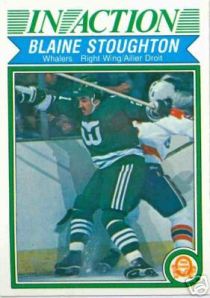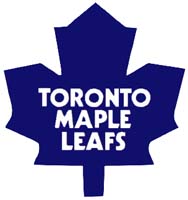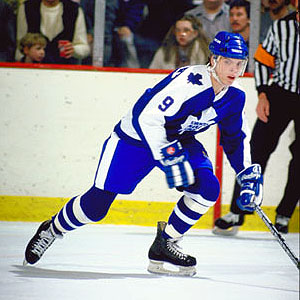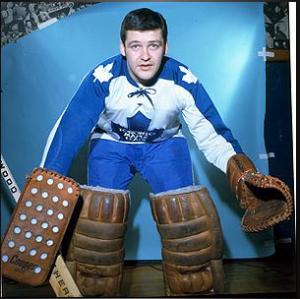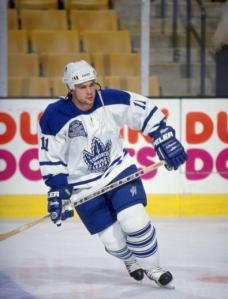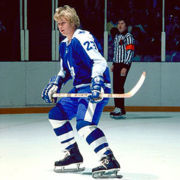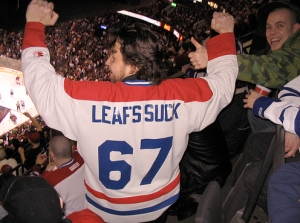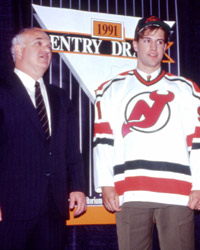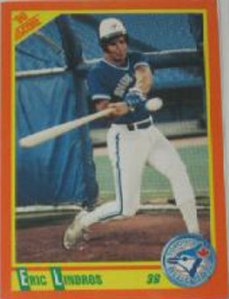Superman Reboot: Where do we go from here?
Now that it is official that the Superman franchise will go with a much needed reboot, the talk of the town for about another year will be the approach of the movie. The only details we have is that the franchise will take a much darker tone in tune with what the dark knight achieved. With this new set of rules the powers that be at WB have let the cat out the bag and admitted that they have to deliver harder hitting modern heroes to maintain the success of The Dark Knight and create a possible crossover in the future. DC comics relies on its fans too much, and hardcore fans do not welcome changes to the character very well. In a way, it is the fans fault that some characters cannot move on with the times. The movie scene may set the trend and allow a much more natural and accepted take on the characters. Here is a list of things the movie could carry:
 Story: The character has to be re-introduced in a more modern setting. Anything from the Donner-Singer-verse is out the window. Krypton will benefit from being presented as a different society from the Donner movies. You can incorporate android-like Brainiac to make him in the movie a threat to the world. An alien technology based kryptonian being designed to run krypton to finalize their dreams of Utopia (Jor-El would be the one opposed to this type of Alien AI that would ultimately be the cause of Krypton’s demise). He can find Kal-el and proceed with a plan to colonize Earth to keep the Kryptonian legacy alive. Superman can see it as his responsibility to stop him in order to protect his new home and as a curse of the Kryptonian legacy. Plus, they can both go at it for a nice action fight sequence. Lex Luthor should not be in this movie, but in pure joker fashion, he can be mentioned for a future film setup. How about the mention of the incredible stock rise of LexCorp in this movie to introduce Lex later on? The only thing I can mention is that the people involved in this project should be professionals that are fans of the character. The success Nolan had with the Hardcore fans was because he did deliver a real Batman that was still Batman.
Story: The character has to be re-introduced in a more modern setting. Anything from the Donner-Singer-verse is out the window. Krypton will benefit from being presented as a different society from the Donner movies. You can incorporate android-like Brainiac to make him in the movie a threat to the world. An alien technology based kryptonian being designed to run krypton to finalize their dreams of Utopia (Jor-El would be the one opposed to this type of Alien AI that would ultimately be the cause of Krypton’s demise). He can find Kal-el and proceed with a plan to colonize Earth to keep the Kryptonian legacy alive. Superman can see it as his responsibility to stop him in order to protect his new home and as a curse of the Kryptonian legacy. Plus, they can both go at it for a nice action fight sequence. Lex Luthor should not be in this movie, but in pure joker fashion, he can be mentioned for a future film setup. How about the mention of the incredible stock rise of LexCorp in this movie to introduce Lex later on? The only thing I can mention is that the people involved in this project should be professionals that are fans of the character. The success Nolan had with the Hardcore fans was because he did deliver a real Batman that was still Batman.
Tone: That has been set from WB’s comments. It will be Darker. Doubtful that it can go all the way to where The Dark Knight went, but a modernized Superman is a must so a more gritty Superman story has to come to effect.
Look: The director will have full freedom to use his visual style in order to distance themselves from the previous template. The character designs should reflect the current times. Not the daily planet of the 1930s.
Costume: This needs a nice big redesign. The cape should remain(look at 300 for nice cape ideas), and a big S would be nice. Not a traditional one though. Do away with the red underwear. Get rid of the yellow. Maybe even combine or use one of these two:


 Cast: Big name actors have to be used. An up and coming star should be considered for Superman. Louis Lane has to be a sassy reporter with spunk. Someone that looks nice and classy like Paola Turbay would be nice.
Cast: Big name actors have to be used. An up and coming star should be considered for Superman. Louis Lane has to be a sassy reporter with spunk. Someone that looks nice and classy like Paola Turbay would be nice.
Score: BRAND NEW!!!
Movie franchise Setup: The idea is to establish a franchise that can go on a long run. The possibilities are limitless and seeing a Death of Superman saga as a trilogy later on would be incredibly interesting.
The limits on this do not exist. Many ways to go around but I think we all agree that the best way to approach this is to deliver a modernized Superman and not a hero archetype of ages ago.
Watchmen in legal trouble
Seems like the little dispute between Fox and WB back in february over The Watchmen is not so little anymore. Fox is not looking at grabbing or sharing any profit. They are looking at completely blocking the movie. This is troubling because it could push the movie from its original date or from being legally distributed…ever.
This really sucks. The trailer looked pretty good and it was interesting to finally see the characters imortalized on film. Lets see what hapens I guess.

DC needs an upgrade for movies to be succesful
 There were some major hits in the comic movie arena this summer. Iron Man and The Incredible hulk were home runs and The Dark Knight was the biggest grand slam of them all. These movies once again have shown the special marriage between comic books and movies is here to stay. However, this something something special has happened. The superhero movies have grown and the basic mold has been broken. People now know and expect something more complex and sophisticated out of a movie. The linear approach and simplicity of a movie like Ghost Rider will not be accepted.
There were some major hits in the comic movie arena this summer. Iron Man and The Incredible hulk were home runs and The Dark Knight was the biggest grand slam of them all. These movies once again have shown the special marriage between comic books and movies is here to stay. However, this something something special has happened. The superhero movies have grown and the basic mold has been broken. People now know and expect something more complex and sophisticated out of a movie. The linear approach and simplicity of a movie like Ghost Rider will not be accepted.
DC and WB are scratching their heads pondering real hard where to go from where they are to be where Marvel is. Their idea clearly is to set multiple platforms and capitalize with one big team up movie(s). However, DC is faced with more decisions and obstacles than Marvel. One of them being how to present the characters to an audience of today without looking unrealistically out of place with its contemporaries.
That is a big problem. The characters and their nature are stuck in a different time. DC comics has not grown with the times. The comments watchmen director Zach Snyder has made are true. The audience is more sophisticated these days and you CANNOT sell them something that is too earnest or unrealistic because they simply wont buy into it. That is if, of course, getting the general  public(i.e. people who are not fans of the character) to even consider checking out your movie is what you are looking for. Unfortunately that is what most of the DC catalogue is sitting at: Filling an archetype. People wearing colorful spandex with capes and masks and with outdated themes. It may have worked for Linda Carter in the 70s but it would just look straight up ridiculous in a modern movie. The common audience wont take it seriously and it is that realism and reflection of the times that DC lacks in most of its core characters and has to modify to have a successful run in Hollywood.
public(i.e. people who are not fans of the character) to even consider checking out your movie is what you are looking for. Unfortunately that is what most of the DC catalogue is sitting at: Filling an archetype. People wearing colorful spandex with capes and masks and with outdated themes. It may have worked for Linda Carter in the 70s but it would just look straight up ridiculous in a modern movie. The common audience wont take it seriously and it is that realism and reflection of the times that DC lacks in most of its core characters and has to modify to have a successful run in Hollywood.
Comic books are a part of popular culture which reflects itself in this form, and its themes and characters have evolved with the times for people to identify with them. Golden Age stuff has historical significance and importance but compared to what it is now it just doesn’t fit. DC has not updated their characters with the times and now were having a huge problem with Superman and its difficulty to have the audience relate to the current incarnation/presentation of the character.  Superman returns was basically a repeat of a 1979 CLASSIC, and this day it didn’t go over too well even with the core FANS because its been done and ,well, it was just silly. People simply didn’t care and take the use of this presentation of the character as one of the weak points of the latest superman movie that’s left a bad taste on movie goers. Note how trying to do the same thing again to please and not alienate the fans ended up upsetting the fans, losing out on repeat viewings and interest of the general public, and not meeting expectations in the box office. Established movie franchises like James Bond have had to adapt with the times to keep filling the seats, and clearly it is working for them. Pierce Brosnan shooting from his invisible car holding a martini was not going to work forever and had to upgrade. That is what has to be done, of course, if setting up multimillion dollar franchises is what WB is down with.
Superman returns was basically a repeat of a 1979 CLASSIC, and this day it didn’t go over too well even with the core FANS because its been done and ,well, it was just silly. People simply didn’t care and take the use of this presentation of the character as one of the weak points of the latest superman movie that’s left a bad taste on movie goers. Note how trying to do the same thing again to please and not alienate the fans ended up upsetting the fans, losing out on repeat viewings and interest of the general public, and not meeting expectations in the box office. Established movie franchises like James Bond have had to adapt with the times to keep filling the seats, and clearly it is working for them. Pierce Brosnan shooting from his invisible car holding a martini was not going to work forever and had to upgrade. That is what has to be done, of course, if setting up multimillion dollar franchises is what WB is down with.
A movie is not made for audiences in the past 70 years. Its made for an audience of TODAY. The reason the Dark knight was successful was because the character was presented in a modern setting with modern themes and situations in a manner that was realistic enough for the audience to suspend their disbelief and take interest all  while still maintaining the essence of the character. There was a reason for Batman to wear a riot gear armor and not spandex with underoos. It was necessary for you to see that it made sense. Of course there are characters like Batman and maybe even superman that must maintain their cape and cowl, but the presentation of most the characters has to be modified and upgraded for these times and someone as imersed in this like Mark Millar will tell you the same. It is possible that the new wave of movies does this for the comics instead of the other way around but certainly DC has to catch up with the times.
while still maintaining the essence of the character. There was a reason for Batman to wear a riot gear armor and not spandex with underoos. It was necessary for you to see that it made sense. Of course there are characters like Batman and maybe even superman that must maintain their cape and cowl, but the presentation of most the characters has to be modified and upgraded for these times and someone as imersed in this like Mark Millar will tell you the same. It is possible that the new wave of movies does this for the comics instead of the other way around but certainly DC has to catch up with the times.
I understand fans wishes to respect the history of the character, and certainly the essense of the character has to remain, but if you want to make money and keep people interested you cannot deliver a character that is out of setting with how sofisticated and non-naive the audience is. Not if you want to cash in big at the BO. When people are faced with something too surreal or not well done they wont enjoy the movie but will spend their time critizicing or making sense of it in their minds instead of watching it. The movie of course has to be fun, and has to be well written, etc, but if DC wants to pull this off succesfully in the same way marvel is doing it the characters have to be treated with a sense of common sensibility and realism that the characters currently do not have. Not to mention it has to be done in the same degree so that they can all be in the crossover movie.
Weed Brownies hulkster style brother!!
After watching the Pineapple Express, I started thinking a lot about the situation were faced with this generation regarding marijuana. The weed debate is always an interesting one full of people with completely biased and misinformed opinions on both sides. We are on a society that has deemed socially acceptable to consume this substance, but the laws say that it isnt. Which is the best way to deal with this, in order to come to the correct conclusion?

Some say a general vote is the way to go to get it over with. This is stupid because only the people who want to have this substance legalized are the ones that are going to be active that day making it a landslide win for pro pot enthusiasts. Ironic by all means considering that the the lazy stoner stereotype will be brought up against this group of people as an ‘against’ argument, but not being lazy is what would guarantee this win.

What we need are actual facts. Unbiased facts with no agendas researched by the government and presented to the public. Is it physically addictive (like alcohol, cigarettes, heroin, etc)? Can you die from consuming it? Can it be considered a street drug in the traditional sense? What are the long term health effects? The answers to them are pretty obvious, but it would be nice for an official word of the actual FACTS to be out there. The general unofficial consensus says there are no physical withdrawal symptoms, and you most definitely cannot die from the THC content. Well unless you pass out in your couch with a lit joint and your house burns down, but that’s another story for another day.
So where is the risk from all this? The closest thing I can think of is lung disease from smoking. However, there are studies that claim that there is no corelation between cannabis and lung cancer . I  honestly believe that if lung cancer was something definite that came from consuming marijuana, all the decades of pot smoking the hippies brought along would have also put in light this problem and this substance would be seen a very differently in the eyes of the underground smokers and tokers of the world. Tobacco is the exact opposite with a proven track record of disease and addiction. Side effects brought up from decades of consumption that have brought up this new anti-cigarette way of thinking that has spawned governments to go directly after the tobacco industry by limiting their advertisement opportunities, and by forcing them to admit the dangers of their product in their own cigarette packages.
honestly believe that if lung cancer was something definite that came from consuming marijuana, all the decades of pot smoking the hippies brought along would have also put in light this problem and this substance would be seen a very differently in the eyes of the underground smokers and tokers of the world. Tobacco is the exact opposite with a proven track record of disease and addiction. Side effects brought up from decades of consumption that have brought up this new anti-cigarette way of thinking that has spawned governments to go directly after the tobacco industry by limiting their advertisement opportunities, and by forcing them to admit the dangers of their product in their own cigarette packages.
 Make no mistake. This is done, in Canada at least, because of the millions of dollars that smokers are costing the health care industry. Yes, not only cigarette smokers get extra smoke breaks at work, they also get to charge extra health care after paying the same amount you do in taxes. This brings me to the next point, the legalization of Marijuana is distant possibly not because of any health or moral issues but because it is close to impossible for the government to tax something that more than likely people will start growing in their backyards. So why should they bother with something that will cost time and effort if they aren’t going to be profiting very much? Unfortunate but I do believe that is how they think. Baby steps might have to be taken in reality for this to happen, and the government should approach decriminalization first before tackling legalization so that progress is made and everyone is happy.
Make no mistake. This is done, in Canada at least, because of the millions of dollars that smokers are costing the health care industry. Yes, not only cigarette smokers get extra smoke breaks at work, they also get to charge extra health care after paying the same amount you do in taxes. This brings me to the next point, the legalization of Marijuana is distant possibly not because of any health or moral issues but because it is close to impossible for the government to tax something that more than likely people will start growing in their backyards. So why should they bother with something that will cost time and effort if they aren’t going to be profiting very much? Unfortunate but I do believe that is how they think. Baby steps might have to be taken in reality for this to happen, and the government should approach decriminalization first before tackling legalization so that progress is made and everyone is happy.
Now were talking about consuming marijuana. Not necessarily smoking it. The only thing that most people fail to realize is that marijuana can be consumed in many different ways, not just smoking, and eating it is most certainly one of them. This would be the healthiest way of consumption unknown to most people out there. If youre curious, check out this hilarious video on how to make weed brownies brother!!!
Another important aspect of marijuana is its medicinal purposes to relieve, stress, depression, anxiety, weight loss and how it helps alleviate arthritis, muscular pain, and other symptoms caused by multiple-sclerosis, HIV infection, spinal cord disease etc. One thing that bothers me personally beyond belief is that psychiatrists in Canada have many, many patients on heavy dosages of anti-depressants that may be more addictive or more harmful to the patient in order to deliver temporary relief instead of offering marijuana to start with and that could have very similar effects as these legally prescribed DRUGS. My heart does indeed weep for every over dramatic 16 year old teenager that gets puts on meds instead of prescribing something as mild as marijuana simply because society has a skewed perception and fear of the substance. These anti-depressants are not necessarily easy to stop taking, and people do believe they cant function without something so dangerous. This is wrong. North America has the busiest pharmacies in the world for a reason, and in a society where you can obtain addictive substances like alcohol and tobacco from a bar or a gas station just with a drivers license, its safe to say that we live in a hypocritical and naive society.
The most important advice I can give you applies to everything in life: EVERYTHING IN EXCESS IS BAD FOR YOU. Moderation is the essence of sanity in society. Marijuana also falls in the same category as shopping and video games in terms of maintaining a harmless habitual activity. Your life cannot revolve around them. You cannot die from any of those, but if you spend most of your time pursuing them, you’re shutting down other important aspects of your life.
Now, I do hope this situation gets dealt with in the next few years in a serious manner. Marijuana use is as mainstream as its has ever been to the point where widely distributed movies like Pineapple Express have a subtle theme of the evaluation of marijuana for what it really is without a massive backlash from the public. People will continue to smoke regardless until the end of time, but because the substance is illegal people are forced to be involved with actual drug dealers and in the majority of times, the money ends up in the hands of actual criminals which is what no one really wants in the end. Lets get this fixed once and for all and follow the model the Dutch introduced by removing marijuana from the world of drug dealers and allowing coffee shops to distribute it.

Response to feedback from 15 Worst Maple Leaf Trades
2013 UPDATE: I have refreshed and expanded this list on another website. Check out the series here: Introduction, #21-25, #16-20, #11-15, #6-10 and #1-5.
First off, a big thank-you to everyone who read and provided feedback on the three-part “15 Worst Trades in Toronto Maple Leafs History” series. It was a blast to research and write the articles, and it sounds like I’ve struck a few chords.
In response to Down Goes Brown; I read and respect your article on the Courtnall for Kordic deal. I do not argue against Kordic being acquired, the Leafs did have a number of small, fast young forwards in the hard-hitting Norris division. BUT… the price paid for Kordic was too high. As a point of comparison, the Leafs acquired Tie Domi from Winnipeg for a (marginal prospect) Mike Eastwood and a draft pick (a 3rd Round pick). That is a perfectly acceptable fee for an enforcer to toughen up the team. A near-point-per-game skilled forward is not. But as I said, I respect your opinion, and thank you for your feedback.
Gen. Borchevsky, GREAT addition with the Doug Jarvis deal. I didn’t even realize he was ever a Maple Leaf prospect!
One deal I wish I had also recalled was the one that sent Rick Kehoe to Pittsburgh for Blaine Sloughton. Kehoe was one year removed from a 33-goal, 75-point season with the Leafs. He went on to record 10 consecutive 45+ point seasons, nine of them involving 27 or more goals, and six of them involving 60+ points.
Blaine Stoughton would turn into a tremendous player… just not for the Leafs. Stoughton left Toronto after two seasons for the WHA, much as Bernie Parent did. And when Stoughton returned to the NHL with Hartford, he became their first great player. In his first four NHL seasons with the Whalers he scored 196 goals and 340 points.
I’m trying to look at both sides of the Leafs coin, however; I’m currently researching and compiling stats for the Best 10 (or possibly 15, if I can find that many) trades in Leafs history. Although I have to admit, my trade is looking VERY heavy on the 1988-2001 timeframe. No Leafs trade in the last 7 years has done much of anything for the franchise, and I haven’t found too many strong Leafs deals from 1970-1985. If anyone would like to suggest deals, please feel free to post a comment below, or email me at jt.urbaneblog@gmail.com.
2013 UPDATE: I have refreshed and expanded this list on another website. Check out the series here: Introduction, #21-25, #16-20, #11-15, #6-10 and #1-5.
Thoughts on upcoming Smallville Season 8
With the fall TV season approaching, I’ve been checking in on a few shows that I watch regularly for some status updates. And there’s a heck of a lot happening around one of my personal favourites, Smallville.
Cast changes are nothing new to the show. Pete Ross and both Kent parents have departed from the show, as have bit players like Lana’s high school boyfriend Whitney Fordman and the original town sheriff (whose name escapes me). But as the show enters its eighth (and likely final) season, there are massive changes on the horizon. Kara (aka Supergirl), Lex Luthor and Lana Lang will not be returning as regulars for the final season. Add in the fact that Lionel Luthor left the show during Season 7 and you have a seriously depleted cast. We are essentially left with Clark, Chloe, Lois and Jimmy Olsen as the only truly remaining core characters.
I won’t miss Supergirl; I don’t feel she added much depth to the show, and the actress didn’t seem to be able to do much with the character. And Lana’s character ran her course, she was due to leave. But losing Lex… you can’t have Yin without Yang. His departure will ultimately affect the show even more than the departure of developers Alfred Gough and Miles Millar. Which brings up another point, they had always insisted on “no tights, no flights” for Clark Kent. This may change now that they are off the show, which could be good or bad.
Season 8 will also feature some other interesting twists. Smallville featured a one-off “Justice League” created from a collection of super heroes introduced at various points in the show’s history; Green Arrow, The Flash, Aquaman and Cyborg. Apparently, this Justice League (likely consisting of Arrow, Aquaman and Martian Manhunter) will become more formal, especially now that Green Arrow is a regular on the series. As a comic fan, I can honestly say this intrigues me. I love the idea of a live-action Justice League show… but I don’t know if I like it at the expense of the Smallville series I have watched regularly over the past seven years. It will be interesting to see how this affects the series.
Finally, there was another piece of news that I didn’t quite know how to react to; Doomsday is coming to Smallville. The very same Doomsday that killed Superman back in the early 1990s (in the comics). Ironically, Doomsday came about because the Lois & Clark series scuttled DC’s original plans to have the comic Superman and Lois get married. However, plans were changed when ABC wanted the on-screen version to get married first. So DC regrouped and ended up doing the Death of Superman storyline, which single-handedly reworked much of 1990s DC mythology (which I won’t go into here). Anyhow, this Doomsday character will apparently have an alter-ego who is an “easy-going paramedic”. This sounds a little like an evil version of the Incredible Hulk… which makes me cringe in anticipation of an on-screen Doomsday that might almost be as bad as the film version of Bane from Batman & Robin.
There are plenty of changes coming; Smallville might be barely recognizable compared to even the most recent season. Will I like it? I have no idea. Will I be entertained? I sincerely hope so. But more importantly… will I watch? Oh hell yeah.
15 Worst Trades in Toronto Maple Leafs History (Part 3 of 3)
2013 UPDATE: I have refreshed and expanded this list on another website. Check out the series here: Introduction, #21-25, #16-20, #11-15, #6-10 and #1-5.
Welcome to Part Three of the worst trades in Toronto Maple Leafs history, the final look at some of the darkest (and dumbest) days in Toronto hockey.
To recap, here is the list so far from Part One (which can be read here):
#15: Toronto trades Tukka Rask to the Boston Bruins for Andrew Raycroft
#14: Toronto loses Gerry Cheevers to the Boston Bruins in the Intra-League Draft
#13: Toronto trades Fredrick Modin to the Tampa Bay Lightning for Cory Cross and a 7th Round Pick in 2001 (Ivan Kolozvary)
#12: Toronto trades Larry Murphy to the Detroit Red Wings for Future Considerations
#11: Toronto trades Kenny Jonsson, Sean Haggerty, Darby Hendrickson and a 1st Round Pick in 1997 (Roberto Luongo) to the New York Islanders for Wendel Clark, Mathieu Schneider and D.J. Smith
And from Part Two (which can be read here):
#10: As compensation for signing RFA Mike Craig, Toronto sends Peter Zezel and Grant Marshall to the Dallas Stars
#9: Toronto trades Lanny McDonald and Joel Quenville to the Colorado Rockies for Pat Hickey and Wilf Paiement
#8: Toronto loses Brian Bradley to the Tampa Bay Lightning in the 1992 Expansion Draft
#7: Toronto trades Jason Smith to the Edmonton Oilers for a 2nd Round Pick in 2000 (Kris Vernarsky)
#6: Toronto trades Darryl Sittler to the Philadelphia Flyers for Rich Costello, a 2nd Round Pick in 1982 (Peter Ihnacak) and Future Considerations (Ken Strong)
And now… on with the not-so-grand finale!
#5: Toronto trades Russ Courtnall to the Montreal Canadiens for Jon Kordic and a 6th Round Pick in 1989 (Mike Doers)
Poor Gord Stellick… he’ll never live this trade down. The Leafs needed a goon, and the Habs were interested in Russ Courtnall. Apparently rather than haggle, the Leafs’ response was “Sure, why not.” How did the trade work out? Sadly, even worse than its reputation. Kordin got 446 penalty minutes and 16 points in 104 games as a Leaf, while Courtnall gradually improved over parts of four seasons with the Habs. He ended up with 82 goals and 195 points in 250 games for Montreal. I know other trades have had closer margins in terms of the numbers, and ranked lower. But this is one of those trades that just lives in infamy. Plus the Leafs have had very, VERY few scoring wingers over the past 20 years, and barely a handful that were drafted by Toronto. What’s worse, the Leafs traded Kordic and Paul Fenton for a 5th round pick for… Alexei Kudashov. Wow. Meanwhile, the Habs turned Russ Courtnall into Brian Bellows, who won a Stanley Cup with the Habs. And Courtnall kept on being a decent offensive player (and I believe an all-star) with the Dallas Stars.
#4: Toronto trades Bernie Parent and a 2nd Round Pick in 1973 (Larry Goodenough) to the Philadelphia Flyers for a 1st Round Pick in 1973 (Bob Neely) and Future Considerations (Doug Favell)
There are bad trades… and then there are truly wretched trades. This one falls into the second category. Toronto had a young goaltender on their roster that left the club to play in the World Hockey Association, which instantly made him an outcast in the eyes of Leafs management and ownership. Having played previously in Philadelphia with the NHL’s Flyers and the WHA’s Blazers, he requested a trade to Philadelphia. His request was granted… and in his first two seasons with the Flyers, Bernie Parent won two Stanley Cups, two Conn Smythe trophies as the MVP of the playoffs, and two Vezina trophies. So he was the best goaltender in the league, and the most valuable player on the back-to-back Stanley Cup champions. He was also incredible during the regular season, posting a record of 177-60-57 in 298 games over six seasons. Doug Favell meanwhile was a complete bust. He was decent for the Leafs in his first season, just plain AWFUL in his second, and gone his third season lasted just three games before he was shipped to the Colorado Rockies.
And the Leafs failed to make a significant impact with the draft pick. They had two other first rounders that year. The other two (Lanny McDonald and Ian Turnbull) were stellar picks. Bob Neely posted decent numbers as a defenseman, but after four seasons and change he was gone, and he only played 22 games after leaving Toronto. Not much staying power. Essentially, the Leafs received four seasons (3 of them decent) from a mid-level defenseman and two seasons (one of them good) from a back-up goaltender from a man who was possibly the best money goaltender in the 1970s. BRILLIANT!!! And don’t give me that 20-20 hindsight crap; Parent posted better numbers in his two seasons in Toronto than Favell did in his entire career.
#3a: Toronto trades a 2nd Round Pick in 2000 (Ivan Huml) to the Washington Capitals for Dmitri Khristich
#3b: The Chicago Blackhawks claim Steve Sullivan from Toronto via waivers
On the surface, the first trade looks harmless. Boston didn’t do much with the draft pick, and Khristich’s numbers in year one (30 points in 53 games) suggest a decent hockey player. Don’t let that fool you, he was AWFUL. His second season (9 points in 27 games) was so bad the Leafs dumped him on Washington for a 3rd round pick in 2001 (which turned into Brendan Bell… who then, in keeping with Leafs’ tradition, turned into 17 games and 5 points from Yanic Perreault). Khristich is the closest thing to a Maple Leaf player that I hated except for Mike Craig. So on the surface, you’re probably wondering… a 2nd round pick for a 6-time 27+ goal scorer isn’t that huge of a risk, why is this trade so high? Two reasons. First, the rumours (which I believe) were that Boston walked away from Khristich’s arbitration settlement, thus making him essentially a UFA. Instead of just SIGNING him, Leafs GM Pat Quinn traded a 2nd round pick to Boston for Khristich’s rights to “keep the peace”.
The second reason why this trade is so high was that, in order to make space for Khristich, Quinn put a young, small forward on waivers. Quinn preferred veterans, and big tough players. And the Chicago Blackhawks plucked Mr. Sullivan off waivers. Steve Sullivan, since leaving Toronto, posted seven consecutive seasons where he scored 22+ goals and recorded 60+ points. By the way, that would have placed him SECOND in Leafs scoring for five of those seasons, third for another, and somewhere in the Top Five for that final season. Yes, I am saying that in those seven seasons, five of those seasons lacked a Leafs player named Sundin scoring 60 or more points. Sullivan scored 303 points in 370 games for Chicago, raising his stock such that the Nashville Predators traded for him at the 2004 trade deadline at a cost of two 2nd Round draft picks. He then scored 158 points in 150 games for the Predators before sitting out the 2007-08 season due to injury. Just a terrible, TERRIBLE trade, one that confirmed the Leafs squandered all the resources they received (Sullivan, Jason Smith and Alyn McCauley) from the Doug Gilmour trade. Imagine how good that trade would look if those three players were still in Leaf uniforms today, over 10 years after Gilmour was sent to New Jersey.
#2: Toronto trades Randy Carlyle and George Ferguson to the Pittsburgh Penguins for Dave Burrows
Most people will question this trade being so high on the list, especially considering the Pittsburgh Penguins were hardly a powerhours during the late 70s and early 80s (which ultimately led to their getting Mario Lemieux 1st overall in 1984). Dave Burrows did absolutely nothing for Toronto. In just over 2 seasons, he recorded 32 points in 151 games, and then he was gone. George Ferguson meanwhile recorded four straight 20-goal seasons, and was even a strong performer in Pittsburgh’s first-round exists (15 points in 22 games). But Randy Carlyle was the true gem of this deal. He played 397 games as a Penguin, recording 323 points. As a DEFENSEMAN. In fact, he won the Norris trophy as the NHL’s best defenseman, recording 83 points in 1980-81. He then went on to play another 564 games for the Winnipeg Jets, recrdong another 306 points. Despite playing on some truly terrible teams that rarely made the playoffs, he still recorded 31 points in 53 playoff games after leaving Toronto. Again, as a defenseman.
But wait, it gets worse (as if we needed worse giving up a consistent 20-goal man and a 1,000-game defenseman) is that the Penguisn were SMART with their assets. Ferguson and the 1st overall pick in 1983 were traded to the North Stars for Minnesota’s pick and two players. The players didn’t amount to much, but Pittsburgh selected long-time Penguin Bob Errey. And Carlyle was traded to the Jets for a 1st round pick in 1984 and Future Considerations. The FC ended up being Moe Mantha. Mantha recorded 168 points in 232 games for the Penguins, before becoming part of the Paul Coffey trade, which (after the ’91 Cup) in turn led to the trade that brought Kjell Samuelsson, Rick Tocchet and Ken Wregget to Pittsburgh (helping the Penguins get the ’92 Cup). As for Doug Bodger, after contributing 167 points in 299 games, Pittsburgh dealt him to the Buffalo Sabres for goaltender Tom Barrasso (an important part of the ’91 and ’92 Cup wins). So the Penguins turned Randy Carlyle into various components of one of the few back-to-back Cup champions of the last 20 years. *sigh* It’s very depressing writing about a team that knows how to continually turn over their high-value assets into new, long-term assets. If only Craig Patrick had been Leafs’ GM… he would have moved Tucker, McCabe and possibly Sundin in 2005, rather than signing them to no-movement clauses after yet another 1st-round exit.
#1: Toronto trades a 1st Round Pick in 1991 to the New Jersey Devils for Tom Kurvers
And here we are… the most infamous trade in Toronto Maple Leafs history. Now I know that earlier I stated that I ignore the draft choices made by other teams, because there is no guarantee that Toronto would have chosen that player (i.e. the Islanders choosing Roberto Luongo with the draft pick from the Leafs). However, in this case I can argue that Toronto would almost assuredly have chosen a player of consequence. Of the 22 players chosen in the first round, 17 have played in at least 575 NHL games as of August 2008. Of the other five, two of them still managed to play over 100 games (and one of them was traded for Markus Naslund). That’s a 77% chance that Toronto would have had received 575+ games from a first rounder, and an 86% chance of receiving 100+ games (which is more than they got out of Tom Kurvers).
Right off the bat, I will state this; Tom Kurvers was NOT an bad acquisition. The year before the Leafs acquired him, they went 28-46-6 and missed the playoffs. With him in 1990-91, they went 38-38-4 and scored 78 more goals than the year before. Kurvers recorded 52 points and a respectable -8 rating in 70 games, along with 3 assists in 5 playoff games. Quite decent, and demostrating that Kurvers was worth trading for, albeit not for a first round pick. But then the next season, with just 3 assists in 19 games, the Leafs (on their way to a 23-46-11 season where they missed the playoffs by 11 points) dealt him to Vancouver for Brian Bradley. Yes, that would be the very same Brian Bradley that the Leafs held onto for for one-and-a-half seasons, before letting him go in the ’92 Expansion Draft (for nothing) to the Tampa Bay Lightning. So in total, dealing their 1991 1st Round Draft Pick resulted in 55 points in 89 games from Tom Kurvers, and 42 points in 85 games from Brian Bradley. To summarize, dealing the first rounder gave Toronto 97 points in 174 games. Of the 17 first rounders to play more games than the Leafs received for Kurvers/Bradley, the LOWEST point total was 128. And that was from a defensive defenseman. So by this math alone, the Leafs screwed up enough for this trade to end up in the top ten trades that make it possible for jerseys like this to exist:
And now comes the clincher. The Leafs were bad in 1990-91… so bad that they were on pace to finish last in the NHL behind the Quebec Nordiques. And Toronto was feeling the sting of Kurvers not working out as expected. So the Leafs traded prospect Scott Pearson and a pair of 2nd Round picks to Quebec; the Nordiques selected Tuomas Gronman and Eric Lavigne. However, you cannot say the trade did nothing for Quebec. What it did was send three regulars to Toronto; Aaron Broten, Lucien Deblois and Michel Petit. They weren’t exactly all-stars, but they were regular players on Quebec. Their removal necessitated their replacement with younger, less talented players. The Leafs even picked up another Nord (Claude Loiselle) near the trade deadline. Now why you ask would the Leafs trade Pearson (their 1988 1st Round choice) and a pair of second round picks for three players from the worst team in the league? Because by making Quebec slightly worse and Toronto slightly better, it diminished the chances of Toronto finishing last overall in the league. Sounds like a noble goal… except the SOLE reason the Leafs did this was to avoid their last-place finish turning their draft pick into the first overall draft choice. This would result in New Jersey turning Tom Kurvers… into teenage phenom Eric Lindros.

Before you say so what… in 1991, Eric Lindros was THE next great player. Not an Alexander Daigle “he might be the next one”… we’re talking a Sidney Crosby “he WILL be the next one”. Lindros scored 71 goals and 149 points in 57 games during his last juniour year. He was so good that he was picked as an 18-year-old to play on the 1991 Canada Cup team. A team so deep that Steve f’n YZERMAN never dressed for a single game. And even though his career can be called disappointing, Lindros still recorded 372 goals and 865 points in 760 games. Fortunately for the Leafs, their Quebec raids paid off, and the Nordiques finished last in the league, giving them the first overall draft pick. The funny part is, rumours swirled a year later that Toronto offered a package including Doug Gilmour, Wendel Clark, Dave Ellett and possibly Felix Potvin to Quebec for Lindros before the Nordiques finally dealt him to Philadelphia.
But getting back to the trade. We already know that it potentially cost Toronto the only true superstar this generation of Toronto fans would have seen (I like Gilmour and Sundin, but neither one of them was a superstar… the last one we had was Sittler). The Leafs breathed a sigh of relief; Quebec’s finish and the San Jose Sharks joining the NHL meant New Jersey picked third. And the Devils chose very, VERY well; Scott Niedermayer. Niedermayer is one of the true great defenseman of this (or possibly any) generation. He scored 476 points in 892 games with New Jersey, winning Stanley Cups in 1995, 2000 and 2003 (and very nearly another one in 2001). He then signed with the Anaheim Ducks as a free agent, where he added another 157 points in 209 games, and a fourth Stanley Cup ring in 2007. He also won a Memorial Cup (the Canadian Juniour Hockey championship), and gold medals at the World Juniour Championship, the World Championship, the World Cup (of hockey) and Winter Olympics. The man was a winner on every single stage that he played. The truly sad part… picking first or third (assuming they were smart enough to pick Niedermayer) would have given the Leafs a TRUE franchise player who would have spent 10+ seasons in their uniform. Any number of players from the 1991 draft could have boosted the club’s fortunes longer term than Kurvers/Bradley. You want scoring? Peter Forsberg went 6th overall, and other options included Brian Rolston, Alexei Kovalev, Markus Naslund, Glen Murray and Martin Rucinsky. Defense? Scott Lachance, Aaron Ward, Richard Matvichuk and Philippe Boucher all played 700+ quality games. Even a “bust” like Pat Falloon scored 322 points.
This was the trade that truly bottomed out the franchise at the end of 1980s. Think of a 19-year-old Eric Lindros or Scott Niedermayer playing on the 1992-93 Leafs alongside Gilmour, Andreychuk, Clark and Potvin. It would have completely changed the dynamic of the team. And Sundin would have had some help keeping the team from being awful in the mid-to-late 1990s. Lindros or Niedermayer might have been enough to turn one of those Conference Finals runs into a Stanley Cup Final apperance… or heaven forbid, a win. And worst-case scenario, Lindros might even have helped out the Blue Jays.
That’s the beauty, and the pain of sports… the what-if’s, the could-have-been’s, and the wish-they-weren’ts. But then that’s also the reason why lists like this are possible. Every team has their share of glorious moments and tragic instances, and it’s unfortunate that Toronto has had more than their share. I hope you’ve enjoyed reading these “Top 15” worst trades in Toronto Maple Leafs history as much as I enjoyed reading them. I’m sure we haven’t seen the last of bad Leaf trades, and no matter what happens we will always cling to our hope that another Gilmour-type trade will bring the franchise back to life. Go Leafs Go!
2013 UPDATE: I have refreshed and expanded this list on another website. Check out the series here: Introduction, #21-25, #16-20, #11-15, #6-10 and #1-5.


